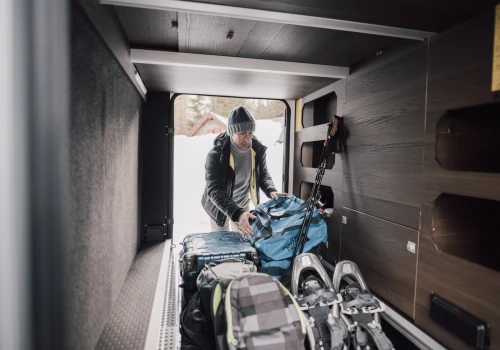Winterising Your Motorhome
Max Kelly
September 29, 2025
Expert Tips from Abacus Motorhomes
Cold weather, frost, and damp conditions can take their toll on a motorhome. Pipes can freeze, batteries lose charge, tyres develop flat spots, and moisture can creep into fabrics and fittings. By preparing your motorhome properly before winter sets in, you’ll avoid costly repairs and ensure your vehicle is ready for new adventures in spring.
At Abacus Motorhomes, we’ve helped thousands of owners care for their vehicles all year round — and here’s our expert guide to winterising your motorhome.
Step-by-step Motorhome Winterising Checklist
1. Drain and protect the water system
Water left in pipes and tanks is the most common cause of winter damage.
- Empty fresh, waste and hot water tanks fully.
- Open all taps (including shower mixers) and leave them in the “open” position.
- Run the pump briefly to clear any remaining liquid.
- Remove water filters and shower heads until spring.
- If your heating system uses antifreeze, check it’s topped up to the correct concentration.
2. Look after your battery
Batteries naturally discharge when left idle, and cold weather accelerates this.
- Fully charge your leisure and starter batteries before storage.
- Disconnect or isolate non-essential circuits to reduce drain.
- If possible, remove the battery and store it in a dry, ventilated place, charging it monthly.
- Alternatively, use a smart charger or solar trickle charger to keep it topped up.
3. Protect the exterior and tyres
Your motorhome’s bodywork and running gear also need attention.
- Wash and wax the exterior to protect against grime and moisture.
- Check all seals, vents, and rooflights for damage and make repairs before storage.
- Inflate tyres slightly above the recommended pressure to reduce the risk of flat spots.
- If the vehicle will remain in one position, use tyre savers or move it occasionally to spread the load.
- Leave the handbrake off, use wheel chocks, and engage a gear to prevent brake seizure.
4. Interior preparation
A clean, dry interior helps prevent mould and pests.
- Remove all food and perishable items.
- Clean surfaces, vacuum upholstery, and make sure everything is dry.
- Leave cupboards, lockers and the fridge door ajar to encourage airflow.
- If possible, take soft furnishings indoors. If not, cover them loosely with a breathable sheet.
5. Gas and fuel systems
Safety is key during storage.
- Turn off gas cylinders and disconnect them — some storage sites require cylinders to be removed completely.
- Store cylinders upright in a ventilated area away from heat sources.
- Top up screen wash with antifreeze solution.
- Keep the fuel tank at least half full to minimise condensation.
6. Keep an eye during storage
Even after you’ve put your motorhome into storage, it pays to check in now and then.
- Inspect regularly for leaks, damp or signs of pests.
- Start the engine occasionally, if possible, to keep moving parts lubricated.
- Ventilate the interior on dry days to keep condensation under control.
Planning to travel this winter?
If you’re touring through the colder months, you’ll need a few extra precautions:
- Insulate external water tanks and pipes.
- Fit thermal blinds or insulated screens to windows and rooflights.
- Use propane gas, which performs better than butane in low temperatures.
- Carry de-icer, snow chains (if travelling abroad), and warm clothing.


